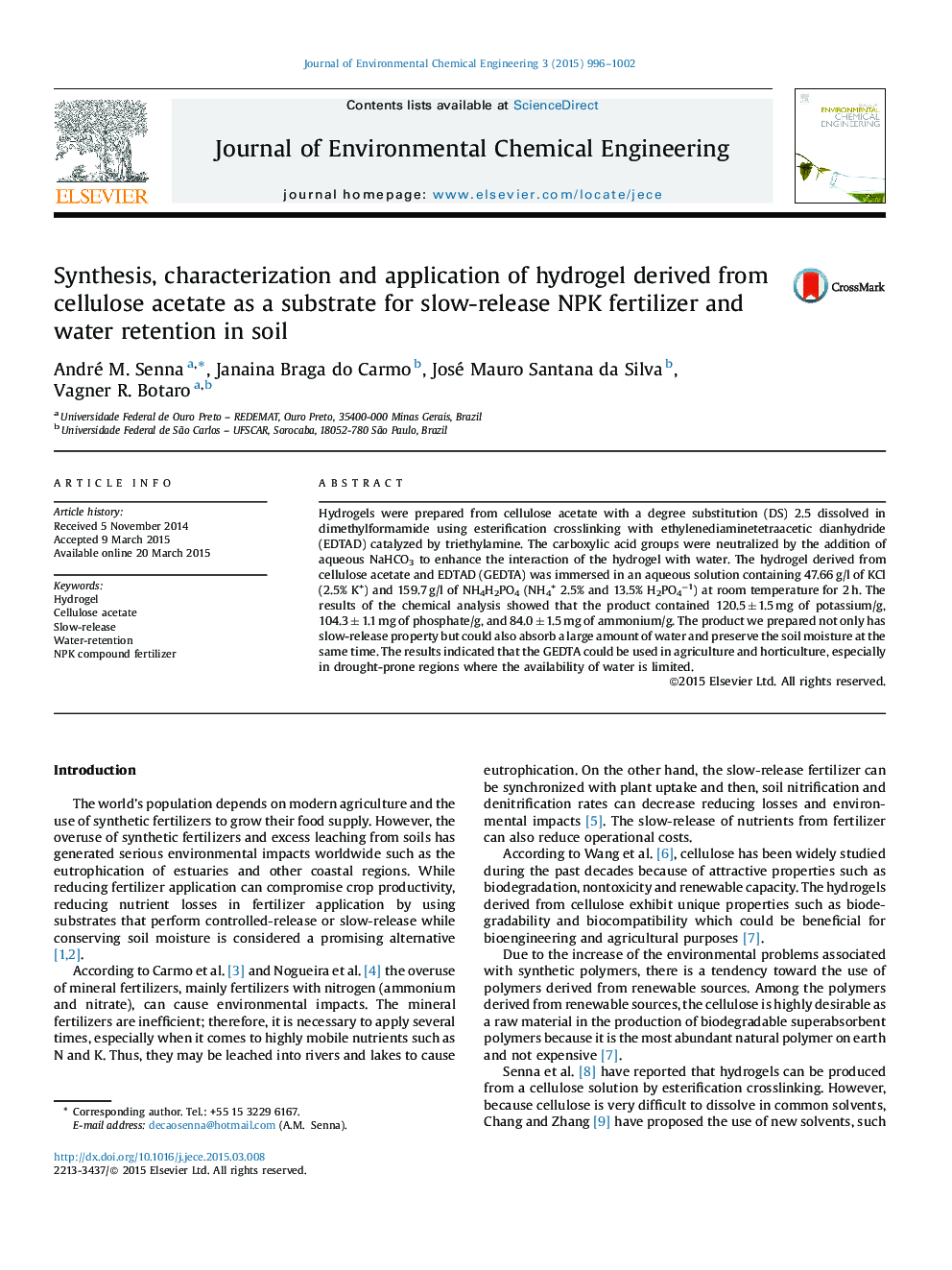| Article ID | Journal | Published Year | Pages | File Type |
|---|---|---|---|---|
| 222325 | Journal of Environmental Chemical Engineering | 2015 | 7 Pages |
•The free OH groups of cellulose acetate with a DS 2.5 were esterified with EDTAD.•The hydrogel showed a good slow-release property and water retention in soil.•The hydrogel could be found in agriculture, especially in drought-prone regions.•The hydrogel is derived from cellulose, which in turn is a renewable resource.
Hydrogels were prepared from cellulose acetate with a degree substitution (DS) 2.5 dissolved in dimethylformamide using esterification crosslinking with ethylenediaminetetraacetic dianhydride (EDTAD) catalyzed by triethylamine. The carboxylic acid groups were neutralized by the addition of aqueous NaHCO3 to enhance the interaction of the hydrogel with water. The hydrogel derived from cellulose acetate and EDTAD (GEDTA) was immersed in an aqueous solution containing 47.66 g/l of KCl (2.5% K+) and 159.7 g/l of NH4H2PO4 (NH4+ 2.5% and 13.5% H2PO4−1) at room temperature for 2 h. The results of the chemical analysis showed that the product contained 120.5 ± 1.5 mg of potassium/g, 104.3 ± 1.1 mg of phosphate/g, and 84.0 ± 1.5 mg of ammonium/g. The product we prepared not only has slow-release property but could also absorb a large amount of water and preserve the soil moisture at the same time. The results indicated that the GEDTA could be used in agriculture and horticulture, especially in drought-prone regions where the availability of water is limited.
